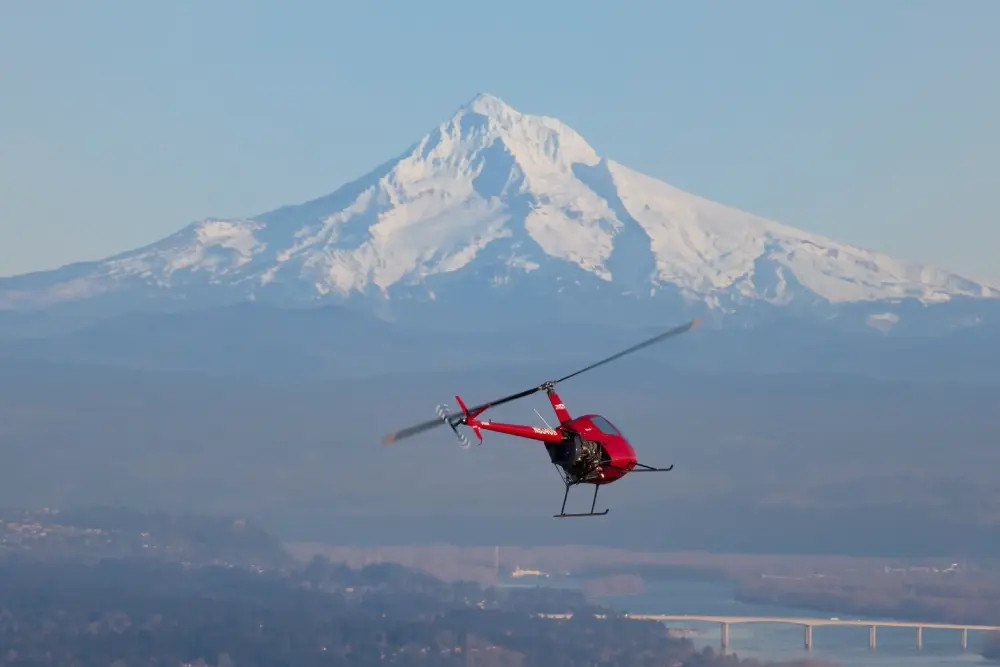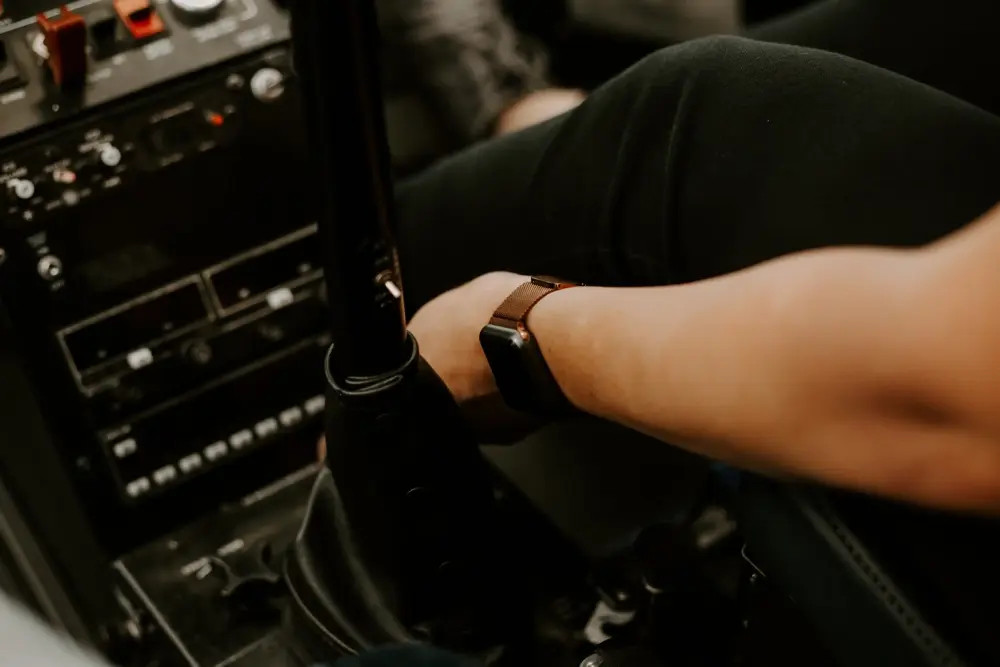How Many Miles Can Helicopters Fly? Helicopters, known for their unique aerial capabilities and rotorcraft technology, are versatile machines used across various sectors. At flyermedia.net, we aim to provide a detailed answer to this question, exploring factors affecting their range and advancements that extend their flight capabilities, providing valuable insights into these remarkable aircraft. This guide will cover helicopter flight distance, fuel efficiency, and operational range.
1. Understanding Helicopter Flight Distance
Helicopter flight distance is a critical consideration for pilots and operators. Understanding the typical range of these aircraft involves examining several factors, from engine type to external conditions.
1.1 General Flight Distance
The general flight distance of a helicopter varies depending on its design and engine. Piston-engine helicopters typically have an average range of 200-350 miles, while turbine-powered helicopters can extend this range to approximately 300-450 miles. According to the FAA, these ranges are influenced by factors like fuel capacity, payload weight, and weather conditions.
For example, the Bell UH-1 Iroquois, famous for its role in military missions, has a practical range of around 315 miles. Conversely, modern high-performance turbine-engine helicopters, such as the Mil Mi-8, can reach altitudes of up to 30,000 feet while maintaining impressive flight ranges.
 Bell UH-1 Iroquois Helicopter
Bell UH-1 Iroquois Helicopter
1.2 Top Helicopter Models and Their Ranges
Different helicopter models offer varying flight distances tailored to specific operational needs. Here’s a comparison of popular helicopter models and their approximate ranges:
| Helicopter Model | Approximate Range (miles) |
|---|---|
| Bell UH-1 Iroquois | 300-315 |
| Mil Mi-8 | 280-310 |
| Boeing CH-47 Chinook | 400-450 |
| Airbus H125 | 340-345 |
| Sikorsky UH-60 Blackhawk | 360-370 |
| Robinson R44 | 350-400 |
As shown in the table, helicopter models have ranges varying from 280 to 450 miles, influenced by design, engine type, and fuel capacity. It’s important to note that these ranges are approximate and can be affected by factors such as payload, weather, and flight plans.
1.3 Factors Affecting Range
Several factors affect the range of a helicopter, influencing its operational capabilities. These include:
- Fuel Capacity: The amount of fuel a helicopter can carry directly determines its flight distance. Larger fuel tanks enable greater distances.
- Payload: The weight of the cargo affects the helicopter’s range. More weight reduces the achievable distance.
- Weather: Adverse weather conditions, such as strong winds and heavy rain, can decrease a helicopter’s range by increasing drag and reducing fuel efficiency.
- Altitude: Increased altitude reduces air density, decreasing lift and fuel efficiency.
- Flight Speed: Flying at high speeds consumes more fuel, reducing overall range.
- Fuel Efficiency: Helicopters with higher fuel efficiency ratings can travel farther on less fuel.
According to a study by Embry-Riddle Aeronautical University, optimizing these factors is crucial for ensuring safe and efficient helicopter operations.
2. Applications of Helicopter Range
Helicopters are versatile machines with numerous applications, each leveraging their unique capabilities. These include search and rescue operations, medical evacuations, military missions, and commercial transportation.
2.1 Search and Rescue Operations
Helicopters are crucial in search and rescue (SAR) operations because they can maneuver through challenging terrain and reach remote locations quickly. Missions include locating missing persons or animals, responding to natural disasters, and providing medical assistance.
For example, the Sikorsky S-76 helicopter, used by the United States Coast Guard, can fly up to 400 miles on a single tank, allowing rescuers to cover vast distances. Equipped with night vision technology, it enhances its effectiveness in low-visibility conditions.
2.2 Emergency Medical Services (EMS)
Helicopters are frequently used in EMS to transport patients quickly and efficiently, particularly in remote areas. Time is critical in emergency situations, and helicopters offer a faster response compared to ground transportation. They can also land in smaller spaces, such as hospital helipads and open fields.
Models such as the Sikorsky S-76 and the Eurocopter EC135 are equipped with medical equipment for air medical services, ensuring patients receive immediate care during transit.
2.3 Military Missions
Helicopters have been vital in military missions, from transporting troops and supplies to conducting surveillance and air assaults. The UH-60 Black Hawk, used by the United States Army, has a range of approximately 400 miles and can carry up to 11 soldiers, highlighting its versatility in various operations.
The AH-64 Apache attack helicopter, with a maximum speed of around 185 mph, carries various weapons, including missiles and guns, emphasizing its role in combat scenarios.
2.4 Commercial Transportation
Since the 1950s, helicopters have been used for commercial transportation, primarily to transport personnel and supplies to remote locations. Helicopter charter companies offer private flights for business or leisure, allowing travelers to avoid traffic and arrive quickly at their destinations.
Helicopters also support tourism, providing aerial views of landmarks and attractions. Civilian helicopters typically have a flight range of 200-400 miles on a single tank. Refueling stops may be required for longer trips.
3. Advancements in Long-Distance Helicopter Flights
Record-setting flights and technological innovations in fuel efficiency and engine power are pushing the boundaries of long-distance helicopter flights.
3.1 Record-Setting Flights
Helicopters have achieved significant milestones in long-distance flight, with several breaking records. Notable examples include:
- In 2004, the AgustaWestland AW139 set a world record for the longest distance flown by a helicopter without landing, covering 1,448 nautical miles.
- Pilots Jennifer Murray and Colin Bodill flew a Robinson R66 helicopter worldwide in 2013, covering over 36,000 miles.
- Airbus Helicopters flew an H225 helicopter non-stop from Marignane to Aberdeen in 2016, covering over 1000 km.
- The Sikorsky-Boeing SB>1 Defiant compound helicopter set a speed record of nearly 300 mph during testing in 2019.
- In July 2021, a French pilot flew an electric-powered Volta eVTOL helicopter for more than seven minutes, covering roughly two miles, setting a new world record for such helicopters.
These records highlight the incredible range and stamina of modern helicopters and pave the way for future advancements.
3.2 Technological Innovations
Technological advancements have enabled helicopters to fly farther than ever. The Sikorsky CH-53K King Stallion, a heavy-lift helicopter, has a range of up to 460 nautical miles (530 miles). It incorporates state-of-the-art materials and systems that improve fuel efficiency and reduce maintenance, allowing it to stay airborne longer.
GPS systems allow pilots to navigate accurately over great distances, minimizing fuel consumption. Onboard satellite communication systems provide real-time weather updates and communication with air traffic controllers worldwide.
3.3 Future Possibilities
Exciting developments in long-distance helicopter flights are on the horizon. Improvements in fuel efficiency and electric-powered helicopters are paving the way for longer flight distances. Manufacturers are developing electric motors to power larger helicopters for extended flights.
According to a report by the International Air Transport Association (IATA), sustainable aviation fuel (SAF) could significantly increase the range and reduce the environmental impact of helicopters.
 Helicopter on a field
Helicopter on a field
4. Maximizing Helicopter Range
To maximize helicopter range, pilots and operators can implement strategies such as upgrading fuel tanks, optimizing flight speed, and reducing payload weight. Upgrading fuel tanks and engines enhances flight range, while minimizing payload weight and optimizing speed also play a role in extending the range.
5. Regulations and Safety Considerations
Operating helicopters involves adhering to specific regulations and safety standards. The FAA provides comprehensive guidelines for helicopter operations, including range considerations, weather minimums, and maintenance requirements. Compliance with these regulations ensures safe and efficient flights.
6. Training and Education
Proper training and education are essential for helicopter pilots to understand and manage flight distance effectively. Flight schools, such as those listed on flyermedia.net, offer specialized courses on flight planning, fuel management, and emergency procedures. These programs equip pilots with the knowledge and skills needed for safe and efficient operations.
7. Choosing the Right Helicopter
Selecting the right helicopter depends on the mission requirements and range needed. Factors to consider include the number of passengers, cargo weight, and the distance to be covered. Consulting with aviation experts and reviewing helicopter specifications on platforms like flyermedia.net helps ensure informed decisions.
8. Environmental Impact
Helicopter operations have an environmental impact, primarily through fuel consumption and emissions. Efforts to mitigate this impact include using more efficient engines, exploring alternative fuels, and implementing sustainable operating practices. As technology advances, reducing the carbon footprint of helicopter flights will become increasingly important.
9. Cost Considerations
The cost of operating helicopters includes fuel, maintenance, and crew expenses. Understanding these costs is essential for budgeting and financial planning. Platforms like flyermedia.net provide resources for estimating operational costs and identifying cost-saving strategies.
10. Future Trends
The future of helicopter range will be shaped by technological advancements, regulatory changes, and evolving market demands. Innovations such as electric propulsion and autonomous flight systems are poised to transform the industry, offering new possibilities for long-distance helicopter flights.
FAQs: How Many Miles Can Helicopters Fly?
1. What factors affect the distance a helicopter can fly?
Altitude, temperature, cargo weight, and fuel load all impact how far a helicopter can fly. The design and condition of the aircraft also play a role.
2. How is the maximum range of a helicopter calculated?
The maximum flight range is determined by factors including fuel capacity, speed, altitude, and air density. Complex computer models that consider multiple variables are typically used.
3. Can helicopters fly long distances across oceans?
While helicopters can fly long distances over water, their smaller fuel tanks make crossing entire oceans impractical without refueling. Additional fuel tanks can extend the flight time.
4. Are there any types of helicopters known to have exceptional ranges?
Yes, some military helicopters have longer ranges due to specialized equipment like auxiliary fuel tanks, which allow them to fly further with greater efficiency.
5. How does weather impact a helicopter’s range?
Harsh weather conditions, such as strong winds or heavy rain, can decrease a helicopter’s range by increasing drag and reducing overall fuel efficiency.
6. What are some technological innovations that have increased helicopter range?
Advancements such as improved engine design, lighter materials, and more efficient fuel systems have contributed to increased helicopter range.
7. What is the typical range of a civilian helicopter?
Civilian helicopters typically have a range of 200-400 miles on one tank of aviation fuel, depending on the model.
8. What are the safety considerations for long-distance helicopter flights?
Safety considerations include ensuring adequate fuel reserves, monitoring weather conditions, and having redundant navigation and communication systems.
9. How can pilots maximize the range of their helicopters?
Pilots can maximize range by optimizing flight speed, reducing payload weight, and flying at the most fuel-efficient altitude.
10. Are there any regulations regarding helicopter flight distance?
The FAA sets regulations regarding helicopter flight distance, including requirements for fuel reserves and flight planning.
If you are interested in pursuing a career in helicopter aviation, contact us at flyermedia.net, Address: 600 S Clyde Morris Blvd, Daytona Beach, FL 32114, United States, Phone: +1 (386) 226-6000 for a tour or more information. At flyermedia.net, we provide valuable resources, including flight training options, aviation news, and career opportunities, helping you navigate the exciting world of helicopters.